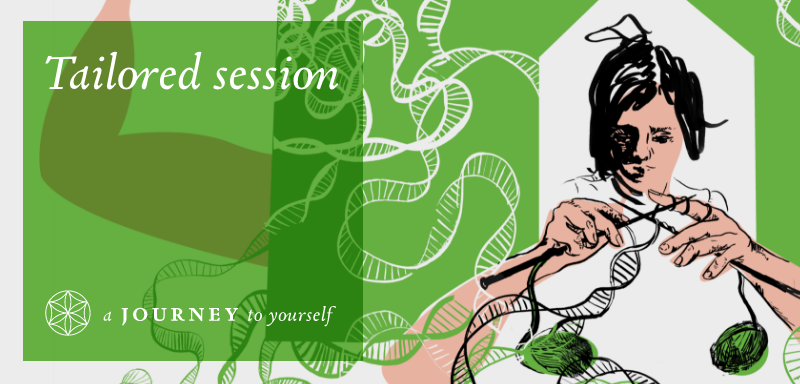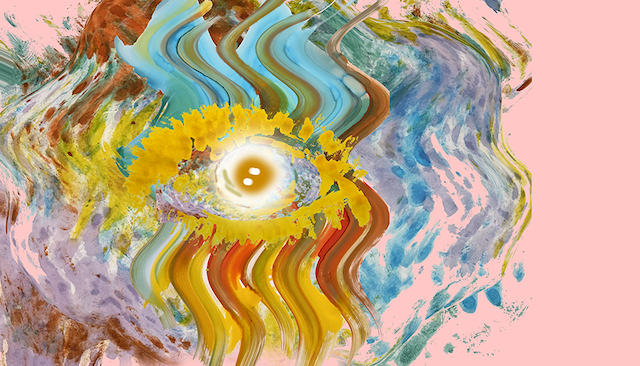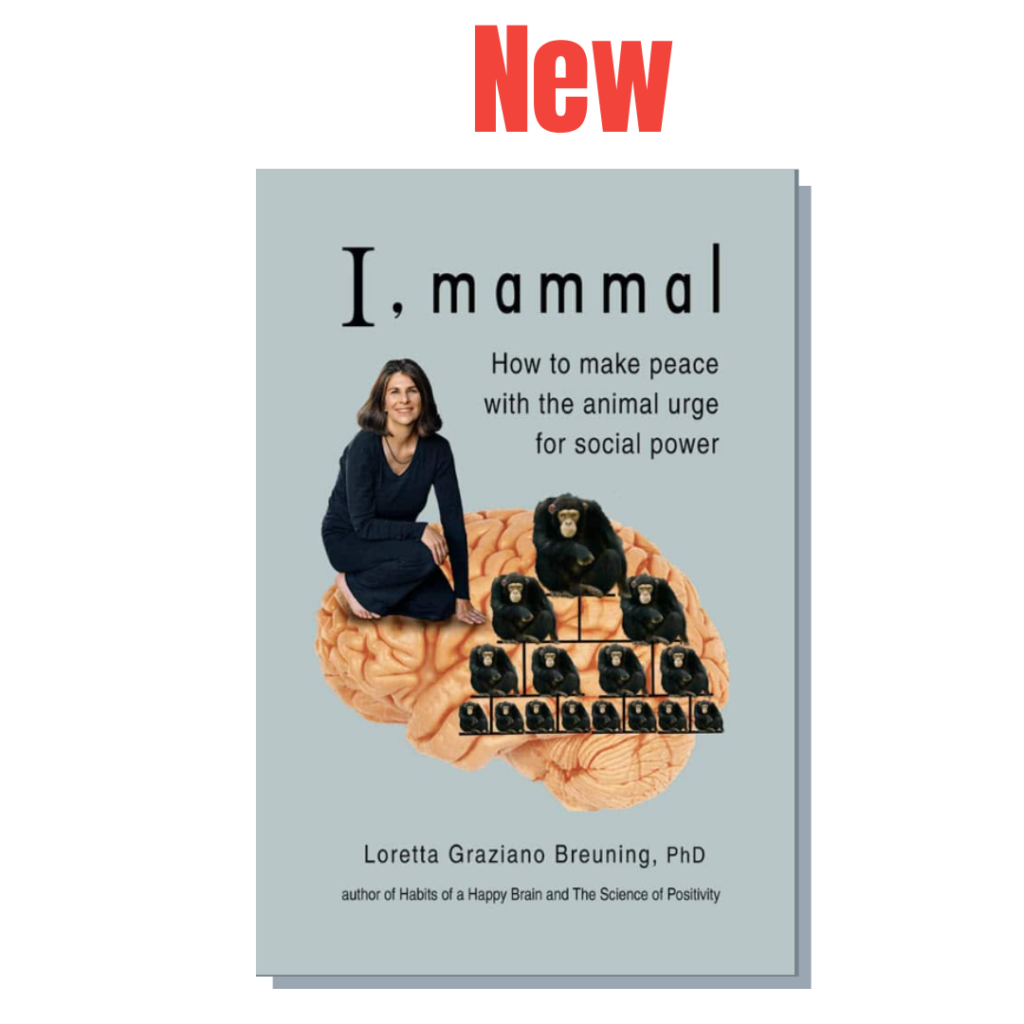“Seeing is the disclosure of what is invisible.”
Anaxagoras
Although when we come into the world in the first weeks of our lives, we see the world only in black and white, it would be hard for us to imagine our world without colors. As we all know, they play a huge role in our lives.
Some stimulate us to act or excite or even irritate us. Others soothe and calm you down. Some warm our space through the feeling of warmth. And others cool down, giving the impression of coolness.
In this article you will learn:
- What color is?
- How color affects our well-being.
- The symbolism of colors.
The different perception of colors by different creatures only confirms that the objective world does not exist. We have as many versions of reality as our brains will create by picking up signals from the outside. We do not all recognize colors and see in the same way. Each of us sees reality differently. What we see is not what we look at, but only an image that is formed in the brain when light that is reflected or emitted by what we are looking at enters our eye.
The word color in some languages is synonymous with form or shape, i.e. the external image of an object.
So, color is quality. Some quality of something we experience sensually. And the determination of the colors – light or dark – indicates the presence or absence of light.
So where does the color come from and what is it?
Many physical and chemical phenomena with the participation of human physical senses appear as a color impression. Color is a type of light (electromagnetic) radiation that is a form of radiant energy perceived by the eye and interpreted by the brain as a mental impression.
A feature of light waves is the wavelength and the drag frequency. The electromagnetic field and light are specific forms of matter. Radiant energy is a stream of independent light quanta (photons). The entire range of electromagnetic wavelengths we call a spectrum.
And the range of waves that trigger the reactions of cells in our eye which is part of the spectrum we call a fetch. The whole world around us is either luminous bodies or illuminated bodies.
Electromagnetic radiation of all wavelengths is conditioned by the vibrations of electric charges that are part of the material body, i.e. electrons and ions. Ions have a low frequency of vibration and a large wave, while electrons have a high frequency.
How does color affect our well-being?

How does color affect our well-being?
The light can be a wave of one wavelength or a beam of different wavelengths.
The light wave falling into your eye triggers a process that creates an impression of color in the brain. Waves of different lengths create the impression of different colors. How does it happen?
The back part of our eye – the retina is made of photosensitive cells – photoreceptors. They are divided into stamens and suppositories. The rods react to changes in the amount of light, i.e. its energy, which results in a light-dark impression.
The suppositories, on the other hand, react to the wavelength of the light, and the actual 3 groups of these waves. A wave with a length of 420 nanometers causes reactions in the form of a blue color, a wave with a length of 530 nanometers – is green, and a wave with a length of 700 nanometers – is red.
If an intermediate wavelength or a wavelength of different wavelengths enters the eye, all groups of cones react to them to some extent, and an intermediate color is produced as a result. The appearance of any color in the brain is therefore the result of adding three pieces of information that give the impression of the three primary colors. Any other color is a proportion between the amounts of primary colors that make it up.
Color is therefore not a property of light, but an impression that arises in the brain under the influence of a wavelength of a certain length.
Different eyes, and different brains, make different sensations. Of course, there are some statistical similarities due to belonging to a given species or anatomical similarities. So, we mostly agree with each other about the similarity of these impressions.
This impression can be pleasant or unpleasant, happy, clean, cheerful, naive, innocent, sad, flashy, boring, or mournful. It depends on the color wavelength. Long, characteristic of warm colors, e.g. red, causes the body to use more energy. And this causes an acceleration of metabolism and stimulation. The short wave is the opposite.
Material bodies can absorb the light radiation of a certain wave.
Light is also scattered when it passes, for example, through smoke or fog, and then each of these particles becomes a source of new light waves propagating in all directions. Light rays can also pass through each other without obstruction, which we know as interference.
Generally, the light beam runs straight, but when it encounters small obstacles in its path, there is a deviation from ray paths and straightness. Hence, for example, the phenomenon of blurring a shadow or light.
Thanks to the phenomenon of diffraction of light, we can distinguish 7 colors of light radiation.
These are the so-called primary colors, i.e. the colors of the rainbow. These include red, orange, yellow, green, blue, indigo, and purple.
When you mix all these colors, they will form white – the color of light. Light symbolizes divinity. Black, on the other hand, means no light. It is made by combining secondary colors that are made of combining primary colors. Black is symbolically the opposite of divinity.
In addition to the basic colors, there are also complementary colors. When we combine the basic color with the corresponding complementary color, white is also produced.
| Primary Colors | Complementary Colors |
| Red | Cyan |
| Orange | Blue |
| Yellow | Indigo |
| Green | Magneta |
| Blue | Orange |
| Indigo | Yellow |
| Fiolet | Yellow-Green |
What is color sensation?
The impression in the brain means that when you see, for example, red, apart from registering this property, many other functions will take place in your brain that has nothing to do with vision. It may, for example, slow down or speed up your heart rate, your mood may change, you may have thought, etc. Therefore, we know that colors affect our mental and physical condition. For all processes taking place in our body. As well as your personality, intelligence, memory, worldview, ethics, and aesthetic experiences.
There are even people who get a certain sensation of color when listening to music. This is not something unusual, as the impressions of colors can also be influenced by the experiences of other senses. Seeing colors is therefore not only a reaction of the organ of sight but a phenomenon that engages our entire sensory apparatus.
Colors, their meaning, and their influence on humans have interested mankind for a long time.
Knowledge of colors is an integral part of traditional Chinese medicine. The ancient Greeks and Romans also believed in the healing power of colors, especially mosaics. In medieval Europe, the energy of colors was appreciated with the art of stained glass or thanks to colorful dishes. Leonardo da Vinci even recommended meditation in churches under purple stained-glass windows to better merge with the divine.
Since, as you know, color affects physiology, its effect may be therapeutic. The color treatment we call chromotherapy from the Greek word “chroma” – color. Chromotherapy was already successfully used by the ancient Egyptians, who even combined its action with the action of precious stones.
How does color affect our well-being? Main examples.
The intensity of the light, the direction of the rays, and the color of the lighting are important to our eyesight. The closer the lighting is to natural daylight, the healthier it is for our bodies. For therapeutic purposes, however, usually used for irradiation with colored light through lamps, special films mounted on the lamps, and special devices.
Color therapy we also use in Aura-Soma therapy, Ayurveda, and traditional Chinese medicine.
Colors affect the work of human endocrine glands, which was first discovered by the Indian physicist Dishaha Pestanji Ghadiali, hence the therapeutic system is based on the influence of colors on individual chakras created by Ivah Bergh Whitten.
For therapeutic purposes, each gland is irradiated with the appropriate light color:
- adrenal glands and prostate – light magnet (raspberry)
- liver – red light
- thyroid and mammary glands – light orange
- vascular system – yellow light
- thymus and pancreas – lemon light
- pituitary gland – light green
- pineal gland – light blue
- parathyroid glands – indigo light
- sex glands – purple light
- spleen – violet light
The color energy content in the body and the functioning of the endocrine glands can be tested using a kinesiological test or a pendulum, as well as intuition, considering such criteria as the most pleasant sensation, feeling of strength, agitation, energizing, and a sense of security.
The healing properties of colors are also used in designing the human environment.
Blue light and blue color neutralize and calm down. Yellow light and yellow force our brains to vibrate harmoniously and improve our mood. Red light and red color stimulate and stimulate the nerve centers. Greenlight and green color harmonize body and mind. Violet light and purple colors facilitate concentration and aid in meditation. Orange and orange light activate the work of the endocrine glands.
Colors are an inseparable element of feng shui – the Chinese art of planning space to achieve harmony with nature. In the Chinese tradition of five transformations, each color is associated with one element:
- Black – water (nitrogen)
- Green – wood (coal)
- Yellow – Earth (Hydrogen)
- Red – fire (helium)
- White – metal (oxygen)
These colors are considered both in clothes and surroundings, as well as in food. Appropriate selection of colors can increase production in the company, reduce staff fatigue, increase morale, and improve safety.
Color interpretation is the basis for interpreting intuitive symbols.
The colors also enhance the shape of the symbols. Usually, when you see or feel a color through clairvoyance, you are beginning to receive a message. It is then important to determine whether the color is clear, light, dark, dirty, or blurred.
Sometimes the symbolism of color provides more important content than other symbols. These kinds of symbols can provide information about temperature and emotions, and even flavors. The color determines our moods, longings, and even mental problems or needs. We can also determine the character of a person by the colors the person likes or dislikes.
The use of color as a symbol date back to the most ancient times. These were amulets, spells, prohibitions, orders, beliefs, spells, and witchcraft. Each manifestation of a person’s spiritual life used color as an element of action in the fulfillment of the goals of spiritual practices.
All knowledge of the symbolism of colors is based on the observation of nature, human experience, and intuition.
Color psychology is universal and independent of the cultural background of the person affected by the color. However, over the centuries, individual cultures also developed their own color codes of meaning. There are even different types of standard color keys, e.g. traffic lights or a key for marking gas, water, steam, air, or oxygen lines. These meaning codes are deeply rooted in our collective unconscious in the form of certain archetypes. For example, the white dress of the Virgin Mary – a symbol of virginity – is the bride’s dress. Purple – the color of the rulers and church leaders.
However, in addition to the fact that as humans we have associated a certain color with some phenomenon or experience, each of us individually also associates a certain color with some personal experience. For example, for you, blue can mean mother, because your mother had blue eyes.
Here are some collective archetypes of selected colors: Here are some collective archetypes of selected colors:
Black – a symbol of evil and misfortune. It is darkness, death, disease, emptiness, ignorance, sin, despair, and sadness. And also, loss and absence. The color of the earth.
Red – a symbol of masculinity, anger, rage, trouble, sex, passion, love, hotness, sharpness, and blood.
Blue – a symbol of femininity, infinity, eternity, truth, communication, sacrifice, faith, intellectual life, and clairaudience, but also depression and sadness. The color of the sky.
Orange – a symbol of sexuality, sensuality, creativity, and vitality.
Green – the color of nature, nature. It is rebirth, youth, hope, freshness, and fertility. It is also the color of the heart.
Yellow – the color of betrayal (although in some traditions green is a symbol of betrayal), light and happiness, clairvoyance, and self-confidence. Humility and abandonment of the material world. The symbol of the sun.
Indigo – a symbol of spirituality. Clairvoyance and psychic abilities. Wisdom and knowledge.
Purple – dignity, dignity, power, and domination.
Violet – moderation, spirituality, repentance. Divine guidance, enlightenment. Symbol of the Supreme Self.
Gold – a symbol of enlightenment, and awareness, and achieving the highest level of spiritual awareness. And also, money and wealth, and love and abundance.
It is also said that whoever knows their own color knows themself.
And this statement has a lot of truth in it. If you think about your favorite color, you can use it to determine your soul type and get to know yourself better. If you have difficulty with it, think about your favorite color in childhood.
Now, knowing what determines the perception of each color (wavelength), you also know that your soul type depends on the length of the electromagnetic wave that makes up your soul.
The impressions of a person watching the color spots can reveal their personality, which was used by the Swiss psychiatrist Hermann Rorschach. He created a test for recognizing the features and internal structure of the human psyche based on the interpretation of the perception of stains.
Max Lüscher also developed a method, in which colored cards are used to define a person’s personality. Based on a person’s choice of the most and least liked colors, their personality, moods, and disposition are analyzed.
There is also a Taylor Hartman personality color test based on the personality types created by Jung:
- Blue – analyst and organizer
- White – a visionary, builder
- Red – the leader
- Yellow – a creator of new ideas
And the “color reflection reading” by Dorothy and Howard Sun, in addition to reflecting the mental state of a person, contains a therapeutic element that helps to bring harmony to the life of the examined person. Thanks to it, you can also check the weaknesses and deficiencies of a person, as well as their dreams and visions.
You can use color to predict group relationships. Check if someone is suitable for a specific profession. Whether to model your personality assuming a specific color of clothing.
Everything that has to do with color is a necessity to express your emotions and problems.
Even the choice of clothes in a certain color is not accidental. And your freedom of choice is only apparent. Preferences for certain colors may change with age, life circumstances, the degree of development of consciousness, or even the mood of the moment. It is your subconsciousness that decides the choice of a specific thing, and consciousness rationalizes this choice after the fact.
The foundations for the modern psychology of colors were laid by the painter Wassily Kandinsky. He proclaimed that art is a kind of spiritual practice, and the creator’s work is a gateway to transcendence. He believed that by contemplating abstract art, a person can gain inner enlightenment because art is an expression of a powerful load of emotions and deeply hidden mystical forces. In the book “On Spirituality in Art”, published in 1911, he analyzed in detail the energy of colors and created his own color wheel with two opposite poles: white (birth) and black (death). Where white was a symbol of a world in which colors cease to exist as substances and material properties.
The emotional power of color in art was continued by color field painting, a tendency in American painting that developed after World War II. Where color was the most important element of works on canvases of gigantic dimensions.
On the other hand, the mystical and healing powers of works of art can be observed in the works of Elżbieta Poll-Sokołowska, a psychically gifted painter. Her paintings, graphics, watercolors, and tapestries represent the soul and healing, among other things, through the energy of colors.
However, Goethe is the first and greatest psychologist of color. He wrote: “Colors affect souls, they can stimulate impressions in them, evoke feelings and thoughts that calm us or move us and evoke sadness or joy”. Goethe noticed that the interaction of colors in nature is based on duality – the penetration of light and shadow, male and female energy. He presented his thoughts on colors in the book “Science about colors”.
Source:
Leszek Matela „Sekrety terapii kolorami. Jak korzystać z energii barw?”, KOS, Katowice 2021.
Adam Zausznica „Nauka o barwie”, Wydawnictwo Naukowe PWN, Warszawa, 2012
Oscar Brunler „The Influence of Colours on Our Mind and Health”, UMA Press, London
Thanks to our partnership with Mindvalley, you can now learn Feng Shui from the best experts in the world.
The energy of your living and working spaces shape your life in surprising ways – but until you are consciously direct that flow of energy to your advantage, you may often find yourself stuck or falling short, even if you already practice other forms of personal growth. In the Feng Shui for Life program, you’ll join Marie Diamond, one of the world’s most sought-after Feng Shui masters, as she reveals simple, practical, and affordable steps for harnessing the positive energy from around you. In just 8 weeks, you’ll begin experiencing profound elevations in your abundance, well-being, relationships, and happiness, as you finally begin mastering this essential element to optimal living.



